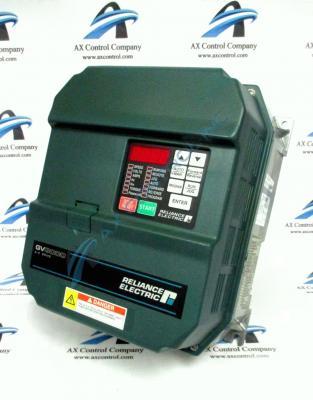About the 10V4151
The 10V4151 is a digital GV3000 AC PWM Drive that is rated 380-460 VAC and 10HP. It was initially made by Reliance Electric but could have possibly also been offered through Baldor Reliance or ABB.
The 10V4151 is 3-Phase and 50/60 Hz. It has a 16.8 amp input/14.2 amp output at 8 kHz. It is rated at 13.4 KVA with a power loss of 250 watts. This drive can be rated for vector regulation or for volt/hertz regulation. It maintains a 180-220 Hz torque control response and a +/-3% torque linearity that has optimal parameter settings. It has a service factor that is rated 1.0. It can maintain a carrier frequency of 2, 4, or 8 Hz. It has a +/- 10% variation for the line voltage and a 0.96 displacement factor. The drive has an adjustable speed that ranges from 0RPM to the max speed. The analog speed reference is 0.5% accurate.
The 10V4151 is in a type NEMA 1 chassis. This chassis boasts air vents which help to encourage airflow to its interior modules. It has a little tab that allows the operator to gain access to an RS-232 connection offering a way to attach a PC to the drive. This drive should not be operated unless it is in an environment that has a non-condensing humidity range of 5-95% and a temperature range between 0 to +40 degrees Celsius.
The 10V4151 should be panel mounted to a flat surface and not behind or in front of another device. There are four factory-drilled holes on the back panel of the drive that is used for the purpose of mounting. Use M8 washers and bolts to maintain a secure panel mount.
Even with proper installation techniques and careful maintenance, the 10V4151 drive user may sometimes run into a fault in the drive's function, due to a litany of reasons ranging from common human error to needed part replacements. One fault that may arise during use of the GV3000 series 10V4151 drive is the identification request not yet performed fault, represented by the fault code nId on the GV3000 display interface. This fault is caused by an identification result of zero defined after drive start-up, and is characterized as a reset fault, as the ideal corrective action when faced with this fault would be to perform an identification request and then subsequently restart the drive.












